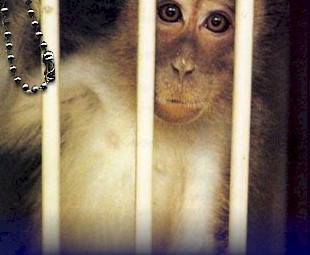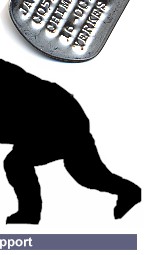Ending Child
Poverty
The World Health Organization (WHO)
estimates 181.6 million underweight pre-school aged children among
the world's developing nations. WHO estimates there are 210.5 million
stunted pre-school aged children and 46.1 million wasted pre-school
aged children living in the world's developing nations.1
["Underweight," "stunted," and "wasted"
are the terms used to describe a spectrum of malnutrition.]
The World Health Organization summarizes its concerns, "Our
findings confirm the great magnitude of undernutrition which, more
than any other disability, continues to hamper the physical
growth and mental development of more than a third of the world's
children.
Indeed, it is a major threat to their very survival."2
[emphasis added]
The National Center for Children in Poverty3 at the Joseph
L. Mailman School of Public
Health of Columbia University reports:
The number of American young children living in poverty increased
from 3.5 million in 1979 to 5.2 million in 1997. The young child
poverty rate grew by 20 percent during that same period.
22 percent of young children in America live in poverty, i.e.,
in families with incomes below the federal poverty line ($12,802
for a family of three in 1997).
Researchers have gathered new evidence on the importance of
the first years of life for children's emotional and intellectual
development.
Unfortunately, millions of American children are poor during
these crucial years. Almost one in four (24 percent) of America's
children under age three lived in poverty in 1995. These 2.8
million poor children face a greater risk of impaired brain
development due to their exposure to a number of risk factors
associated with poverty.
Children deprived of proper nutrition during the brain's most
formative years score much lower on tests of vocabulary, reading
comprehension, arithmetic, and general knowledge. The more severe
the poverty a child faces, the lower his or her nutritional
level is likely to be.
Exposure to neurotoxins such as lead causes brain damage and
stunts the growth of the brain. 55 percent of African American
children living in poverty have toxic levels of lead in their
blood.
Experiences of trauma or abuse during the first years of life
result in extreme anxiety, depression, and/or the inability
to form healthy attachments to others. Another troubling effect
of early trauma is that it leads to a significantly higher propensity
for violence later in life. The stressors that face poor families
cause much more trauma for their children.
|
WHAT CAN BE DONE?
Reduce the Poverty Rate, says the National Center for Children in
Poverty.
World Vision4 is the largest child sponsorship organization
in the world according to their television campaign to raise money
for children in poverty. Spokespersons Kathy Lee Gifford and Alex
Trebek told viewers that $22 a month in donations will give one
child living in poverty the food they need to have a chance for
healthy development.
The Christian Children's Fund5 asks for only $0.80 per
day, or $24 a month to lift a child from hunger.
Feed the Children,6 an organization dedicated to feeding
the most impoverished children in America, says they can move1000
pounds of food for a donation of only $10 a month.
Look at these figures from another perspective. David Amaral, a
researcher at the California Regional Primate Research Center in
Davis, California and Ned Kalin, a researcher at the Wisconsin Regional
Primate Research Center in Madison, Wisconsin received a combined
total of $579,487 tax dollars in 1998. They were paid to inject
chemicals into the brains of young monkeys. These chemicals were
injected into the region of the brain associated with basic emotions
such as fear.
This means that approximately 724,359 children were left in poverty,
in 1998, so that Amaral and Kalin could study methods of disrupting
normal emotional development in monkeys.
In 1997 the National Institutes of Health spent approximately $114
million to keep researchers at the [then] seven Regional Primate
Research Centers working at projects like Kalin's and Amaral's.
Researchers worked to clone monkeys, addict them to cocaine, poison
them with alcohol, infect them with monkey viruses, and study why
so many monkeys in laboratories mutilate themselves. This $114 million
was only a portion of the total spent by the federal government
to experiment on primates. Most major universities have projects
using primates underway. It would not be unreasonable to estimate
that the total figure, used in this line of research today, has
exceeded $200 million dollars per annum.
But, using the 1997 figures and using only the total consumed by
the [then] seven NIH centers that year, about 143 million children
who could have been saved were left in poverty. So, these scientists
could achieve no larger impact than demanding that the primate centers
be closed immediately and the money allocated to them be immediately
targeted to end the ravishes of child poverty. By simply closing
the primate centers stunting and wasting could be nearly eliminated
among the world's children.
And, by closing only one primate center, child poverty in the U.S.
could be ended.
What the researchers will do remains to be seen.
Rick Bogle, 1999; Revised, 2002
Notes
1. M. de Onis, C. Monteiro, J. Akré‚ G. Clugston
The worldwide magnitude of protein-
energy malnutrition: an overview from the WHO Global Database on
Child Growth.
Available on line (as of 3-2002) at http://www.who.int/whosis/cgrowth/bulletin.htm
2. See above
3. National Center for Children in Poverty, Mailman School of Public
Health, Columbia
University. Available on line (as of 3-2002) at http://cpmcnet.columbia.edu/dept/nccp/
Statistics are from the National Center for Children in Poverty's
Child Poverty Fact
Sheets Available on line (as of 3-2002) at
http://cpmcnet.columbia.edu/dept/nccp/main4.html
4. World Vision. Available on line (as of 3-2002) at http://www.wvi.org/home.shtml
5. Christian Children's Fund Available on line (as of 3-2002) at
http://www.christianchildrensfund.org/
6. Feed the Children. Available on line (as of 3-2002) at http://www.christianity.com/feedthechildren
Home Page | Our Mission | News
What Are Primate Freedom
Tags | Order Tag
Primate Research
Centers | Resources
|






